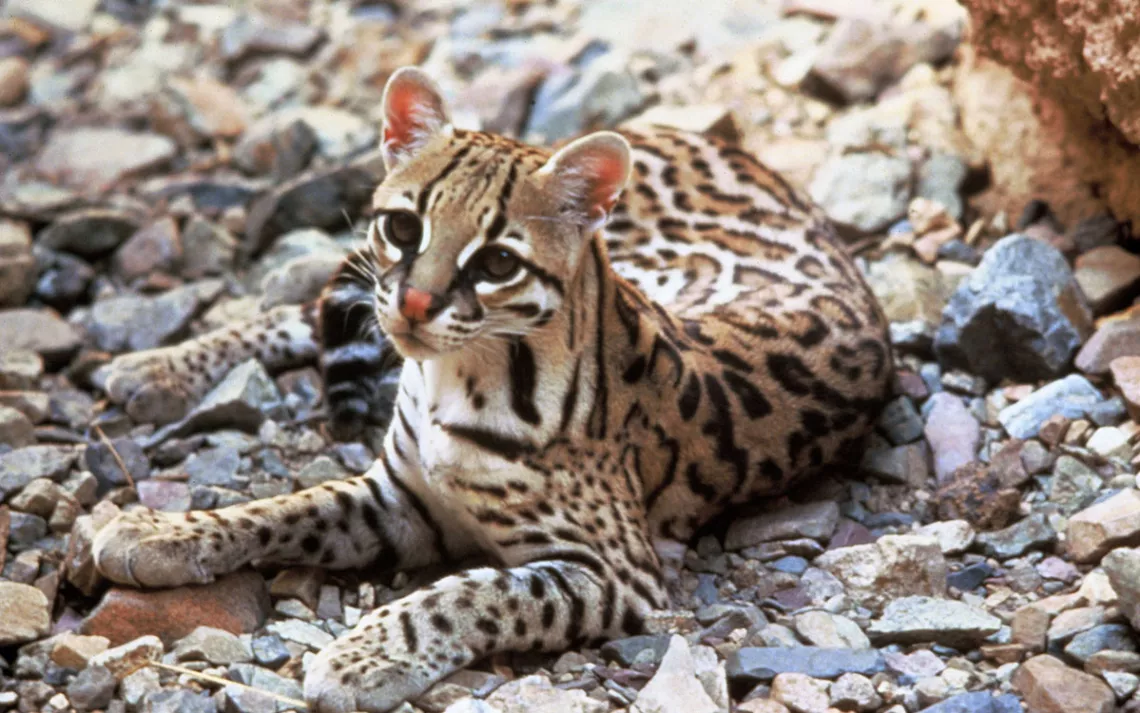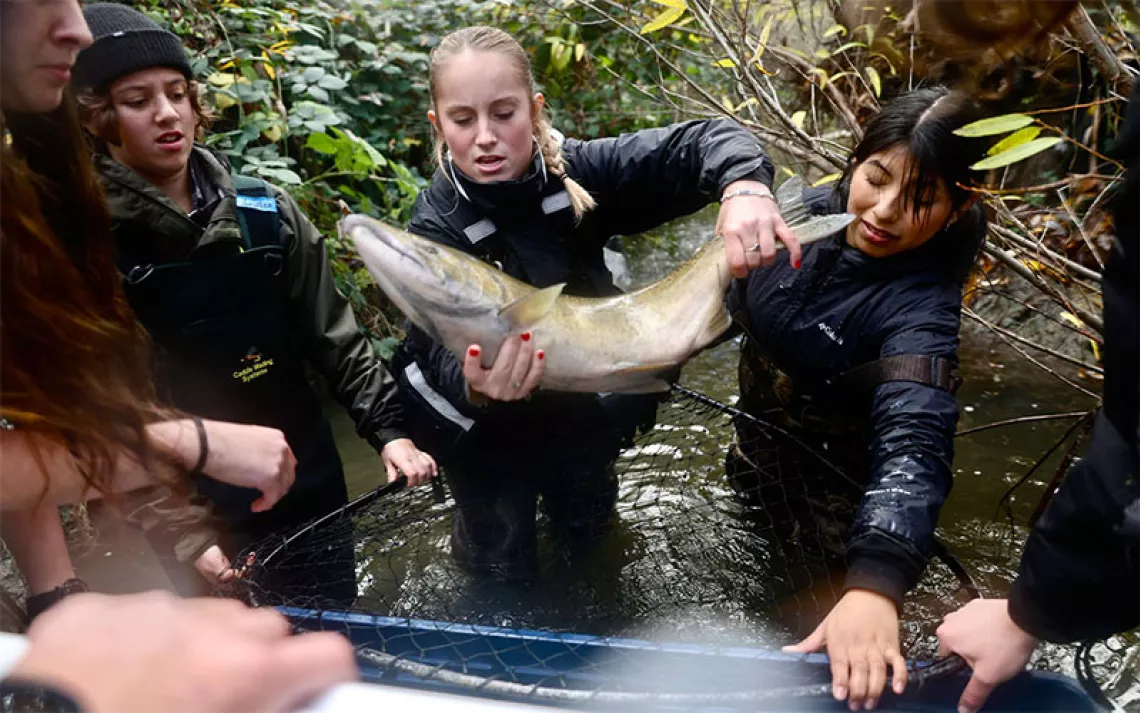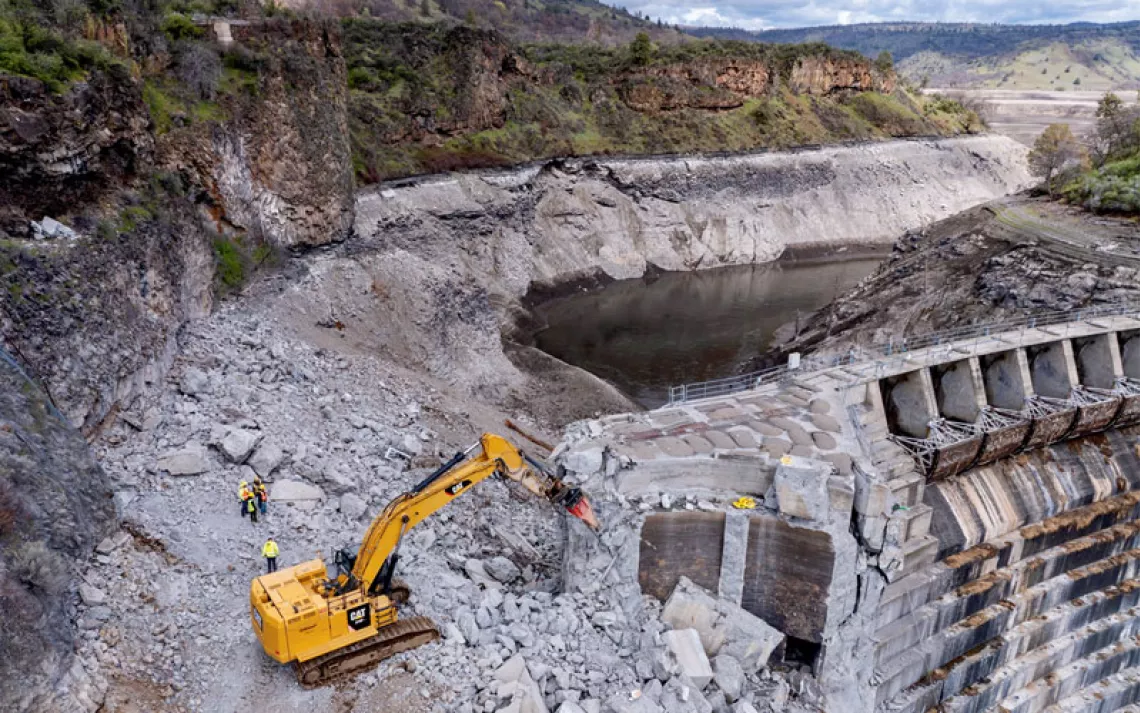Ocelots Find an Unlikely Haven in South Texas
Private landowners offer a lifeline to these endangered wild cats

An ocelot. | Photo by Tom Smylie/USFWS
A thick humidity lingers during most seasons in South Texas. Spiny hackberry, blackbrush, and other thorny plants create dense walls of vegetation. The Texas sun shines often, dousing the hundreds of thousands of acres of ranchland in near-white light. But upon closer look, one might catch a flash of a golden fur coat, spotted with black blotches and bands or big, luminous eyes peeking between a thicket of shrubland. These wild cats are ocelots—and they’re among the only two small populations remaining in the entire nation.
Though these endangered cats once roamed everywhere from Louisiana to Argentina, less than 80 remain in the nation—and they’re all in South Texas. They live in two isolated populations: one on private ranchland and the other in Laguna Atascosa National Wildlife Refuge, about 40 miles farther south in the Rio Grande Valley. Due to their small populations, the wild cats are threatened by low genetic diversity caused by inbreeding. And because the remaining subspecies live in Texas’s low-level coastal areas, many worry that the entire breeding population and its habitat could be wiped out by a tropical storm along the Gulf Coast.
But in 2021, several academic institutions, organizations, and private landowners came together to nurture a new ocelot population in Texas, with the hope of eventually taking the wild cats off the endangered species list. Most recently, in September 2023, a Texas-based organization called the East Foundation and the US Fish and Wildlife Service signed a Safe Habor Agreement, which allows private landowners to contribute to recovery efforts. Under the terms of the pact, East Foundation has agreed to voluntarily help expand ocelots' range in exchange for assurances that, if the proposed actions help boost ocelot populations, the federal government won't impose added restrictions or burdens on its operations. The agreement involves monitoring and habitat management to reintroduce suitable ocelots to the region.
The East Foundation manages over 217,000 acres of ranchland in South Texas and collects data on ocelot population size, genetics, diseases, survival and mortality, movements, and habitat use. The organization has photo-documented over 30 individual ocelots on one of its ranches near Port Mansfield and uses various research tools such as tracking collars, camera trapping, scat collection, and live trapping to gain more knowledge on ocelots and their needs to better conserve the species on private lands. The organization also extracted semen from the Texas ocelots to breed the species in captivity and establish a more genetically diverse pool.
“All this information helps us implement a reintroduction program thoughtfully and deliberately as we take into account the precautions and measure the value of the overall collective effort,” said Roel Lopez, the director of the Texas A&M Natural Resouces Institute, which, along with the East Foundation, is one of the project’s partners. “And by doing so, it gives us lessons to potentially continue this type of effort or even expand it into other areas.”
If the Fish and Wildlife Service, which manages threatened and endangered species, approves the plan, the team will place the cats on private lands that are remote and unoccupied by existing populations. Ocelots were more widespread historically, but with habitat fragmentation, largely due to urban development, bits of that range have gradually been lost.
It’s up to the project’s research partners, like East Foundation, to look for places that wouldn’t be developed any time soon, aren’t near any cities, are far from high-traffic roadways, and wouldn’t be inundated during a coastal hurricane. As climate change continues to loom over the planet and increase both the intensity and frequency of storms, the coastal areas where current ocelot populations reside are at risk. “Part of the reintroduction effort is to reclaim historic habitat that ocelots had been lost from—habitat that remains, but is unoccupied,” said Lindsay Martinez, a research program coordinator at East Foundation.
South Texas’s remoteness, infrequent vehicle traffic, and lack of urban development are all factors that make the region safe for at least one of the two ocelot populations in the state. “South Texas is one of the fastest growing regions in terms of land conservation,” Martinez said. “Ocelots have been isolated through walls of urban development, so that’s one of the reasons its fragmented populations reside at the northern fringe or range of the region, where it’s more undeveloped.”
Though it may seem a bit unlikely that Texas, a fiercely red state, has a stake in the recovery of wildlife or conservation, South Texas has a long legacy supporting wildlife on private ranches and land. This land is crucial to conservation efforts because 95 percent of the state is privately owned land, with many of the region’s ranches dating back to Spanish land grants.
“Without private lands, there would not be a lot of outlooks for ocelots in Texas,” said Lopez. “This effort shows the importance of private lands in wildlife conservation—the two go hand in hand. It’s not just ranching versus wildlife, but truly both. This project is about the ability to find common ground, and right now, many ranch stewards are the leading conservationists in the state.”
There’s also a mutually beneficial relationship between the landowners and ocelots. Because the cats aren’t large carnivores, they don’t cause any conflict with livestock or pose any human safety concerns and prey on mice, gophers, and other small mammals. Martinez said that pride plays a role as well: “As Texans, we’re proud of our native species and, therefore, want to be a champion of ocelots, which are an iconic and beloved species in the state, and we want to help recover the population.”
Developed after a multiyear-long reintroduction research and planning effort between the Texas Parks and Wildlife Department, conservation organizations, universities, the East Foundation and other private landowners, the proposed agreement would reintroduce ocelots into areas where they can survive and be safe from most threats—such as the East Foundation’s San Antonio Viejo Ranch. The agreement also states that the organization, which has long been determined to promote land stewardship—will reintroduce ocelots onto private lands in nearby counties as well, along with continuing ocelot monitoring and research.
“We all went into this field of study with the hope of improving the status of wildlife species and habitats,” said Lopez. “This project allows us to operationalize that, beyond publishing information in a journal, but rather using that information to make smarter decisions to ultimately accelerate the recovery of ocelots.”
 The Magazine of The Sierra Club
The Magazine of The Sierra Club



